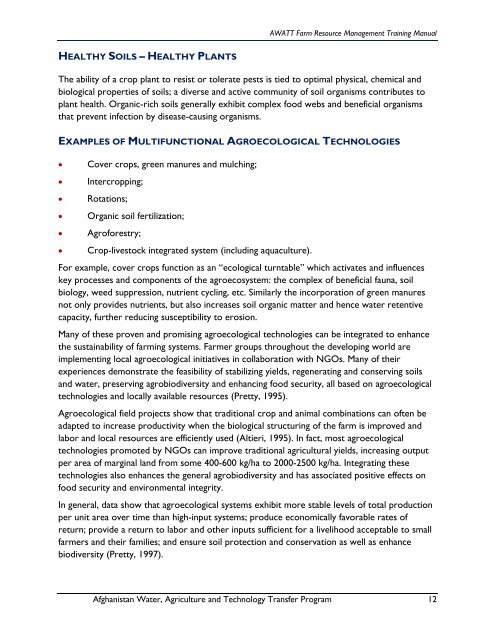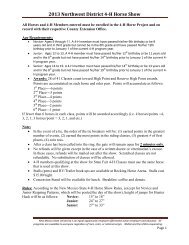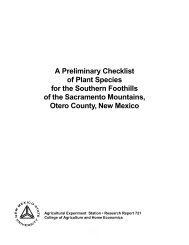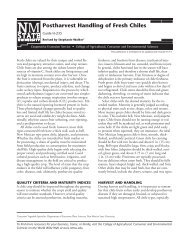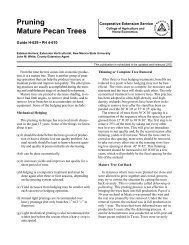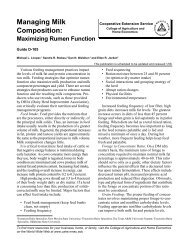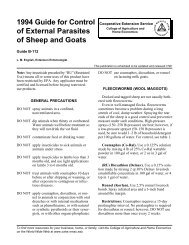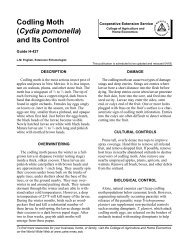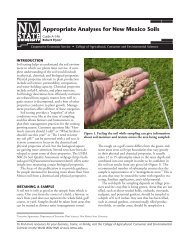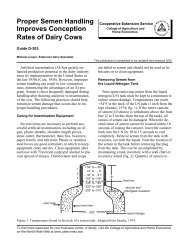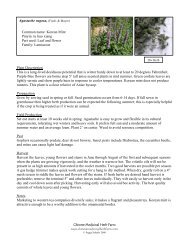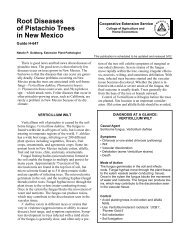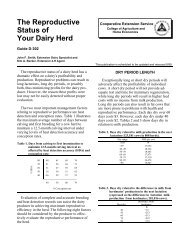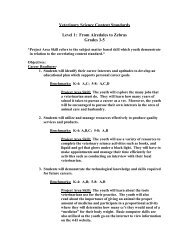Farm Resource Management (FRM) - College of Agricultural ...
Farm Resource Management (FRM) - College of Agricultural ...
Farm Resource Management (FRM) - College of Agricultural ...
You also want an ePaper? Increase the reach of your titles
YUMPU automatically turns print PDFs into web optimized ePapers that Google loves.
AWATT <strong>Farm</strong> <strong>Resource</strong> <strong>Management</strong> Training ManualHEALTHY SOILS – HEALTHY PLANTSThe ability <strong>of</strong> a crop plant to resist or tolerate pests is tied to optimal physical, chemical andbiological properties <strong>of</strong> soils; a diverse and active community <strong>of</strong> soil organisms contributes toplant health. Organic-rich soils generally exhibit complex food webs and beneficial organismsthat prevent infection by disease-causing organisms.EXAMPLES OF MULTIFUNCTIONAL AGROECOLOGICAL TECHNOLOGIESCover crops, green manures and mulching;Intercropping;Rotations;Organic soil fertilization;Agr<strong>of</strong>orestry;Crop-livestock integrated system (including aquaculture).For example, cover crops function as an ―ecological turntable‖ which activates and influenceskey processes and components <strong>of</strong> the agroecosystem: the complex <strong>of</strong> beneficial fauna, soilbiology, weed suppression, nutrient cycling, etc. Similarly the incorporation <strong>of</strong> green manuresnot only provides nutrients, but also increases soil organic matter and hence water retentivecapacity, further reducing susceptibility to erosion.Many <strong>of</strong> these proven and promising agroecological technologies can be integrated to enhancethe sustainability <strong>of</strong> farming systems. <strong>Farm</strong>er groups throughout the developing world areimplementing local agroecological initiatives in collaboration with NGOs. Many <strong>of</strong> theirexperiences demonstrate the feasibility <strong>of</strong> stabilizing yields, regenerating and conserving soilsand water, preserving agrobiodiversity and enhancing food security, all based on agroecologicaltechnologies and locally available resources (Pretty, 1995).Agroecological field projects show that traditional crop and animal combinations can <strong>of</strong>ten beadapted to increase productivity when the biological structuring <strong>of</strong> the farm is improved andlabor and local resources are efficiently used (Altieri, 1995). In fact, most agroecologicaltechnologies promoted by NGOs can improve traditional agricultural yields, increasing outputper area <strong>of</strong> marginal land from some 400-600 kg/ha to 2000-2500 kg/ha. Integrating thesetechnologies also enhances the general agrobiodiversity and has associated positive effects onfood security and environmental integrity.In general, data show that agroecological systems exhibit more stable levels <strong>of</strong> total productionper unit area over time than high-input systems; produce economically favorable rates <strong>of</strong>return; provide a return to labor and other inputs sufficient for a livelihood acceptable to smallfarmers and their families; and ensure soil protection and conservation as well as enhancebiodiversity (Pretty, 1997).Afghanistan Water, Agriculture and Technology Transfer Program 12


